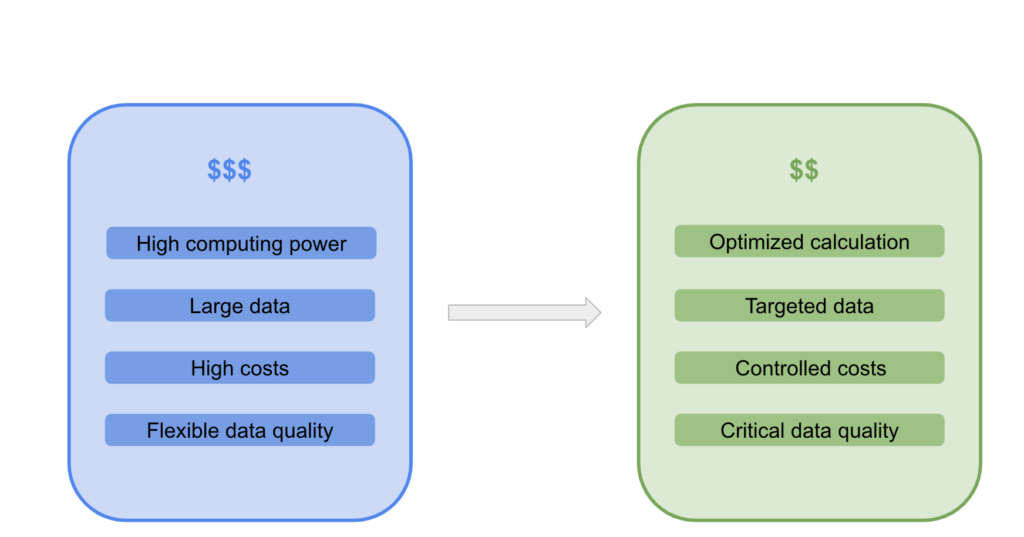The Economic Transformation of AI Solutions in the Pharmaceutical Industry
The Economic Transformation of AI Solutions in the Pharmaceutical Industry
Our Analysis of the IAAction Summit
The recent IAAction summit in Paris marked a turning point in our understanding of the economic challenges of AI in the pharmaceutical industry. Emmanuel Macron and Sundar Pichai highlighted the emergence of new approaches that significantly optimize the costs of artificial intelligence solutions. Let’s analyze this transformation and its concrete implications for pharmaceutical laboratories.
Cost Optimization Levers
Three major innovations are redefining the accessibility of AI solutions today:
Intelligent Model Compression
Quantization and pruning techniques help reduce resource consumption while optimizing inference costs by 50 to 70%, depending on the use case. These methods maintain optimal efficiency without compromising AI model performance by employing domain-specific approaches.
Infrastructure Evolution
New generations of specialized processors improve efficiency, while cloud solutions evolve toward more flexible models. This evolution allows organizations to benefit from scalable AI solutions tailored to their needs and accessible at different levels.
The Rise of Specialized Models
Techniques such as RAG and LoRA enable efficient customization of AI models, optimizing their adaptation to specific needs. At the same time, the emergence of open-source solutions reduces licensing costs, making these technologies more accessible. In this context, data quality becomes a crucial factor in ensuring optimal performance.
The Modern AI Paradox: Power vs. Intelligence
The pharmaceutical industry faces a crucial strategic choice in its approach to artificial intelligence. Our analysis reveals two distinct paradigms, each representing a different AI philosophy:
The “Standard” Approach: Power Serving Volume
The use of high-performance GPUs and powerful computing clusters enables the rapid processing of massive data volumes. Thanks to this brute force, models maintain a relative tolerance to data quality while ensuring reliable results. However, this approach comes with high infrastructure costs and significant energy consumption.
The “Smart” Approach: Efficiency Through Quality
This approach prioritizes optimization and precision by relying on compressed and optimized AI models to maximize performance while minimizing energy consumption and infrastructure needs. It heavily depends on high-quality data, whose relevance ensures superior predictive accuracy. Consequently, a significant investment in data qualification and structuring is essential to guarantee reliable and precise results.

Our Unique Position
At Pixels Health, our 20 years of expertise in structuring healthcare data allow us to adopt a hybrid approach.
We combine optimized and efficient AI models, designed to maximize performance while minimizing resource consumption. Our highly qualified medical database ensures enhanced accuracy and reliable predictions. With an adaptive infrastructure, we adjust resources according to each project’s specific needs. Finally, we achieve an optimal balance between cost and performance, allowing pharmaceutical laboratories to benefit from AI’s advantages without excessive costs.
This balanced approach enables our clients to leverage the best of both worlds: power when necessary, efficiency by default.
Impact on Pharmaceutical Laboratories
For Marketing Teams
The deployment of omnichannel campaigns becomes faster, allowing greater responsiveness to market changes. With fine-tuned personalization by medical specialty, messages and actions are better targeted for each segment. Additionally, universal access to predictive analytics enables teams to optimize decision-making and implement more effective strategies.
For Sales Teams
Real-time decision-support tools help commercial teams adjust their actions with precision. Continuous personalized training enhances representatives’ skills, ensuring better adaptation to market changes. Finally, optimizing territories and sales routes improves travel efficiency and maximizes impact.
For Innovation
AI facilitates the experimentation of new approaches by reducing technical and financial constraints. The agile integration of field feedback allows strategies to be quickly adapted and processes optimized. This dynamic fosters the accelerated development of tailor-made solutions, perfectly aligned with market needs.
New Economic Models
The industry is shifting toward more flexible and adaptable business models:
Economic models are transforming with usage-based billing, offering companies greater flexibility. Solutions are becoming modular and scalable, allowing progressive adaptation to specific needs. This evolution also promotes advanced customization without generating significant additional costs, making AI more accessible and efficient.
Challenges and Perspectives
While cost optimization is a reality, it comes with new challenges:
The adoption of AI solutions presents major challenges, including regulatory compliance management and the security of sensitive data. Training teams on new tools becomes essential to ensure efficient and optimal usage. Finally, integrating these technologies into existing processes is a key challenge to ensuring a smooth and effective transition.
Conclusion
The economic transformation of AI solutions is not just about cost reduction but a complete redefinition of usage models. For pharmaceutical laboratories, this is an opportunity to rethink their marketing and commercial strategies by leveraging more accessible and adaptable solutions.